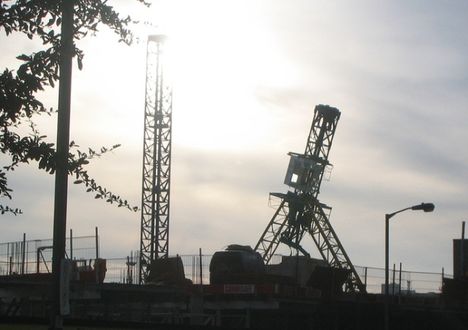The jury in the inquest into the deaths of two men killed when a tower crane collapsed in Battersea London in 2006, has returned a ‘Narrative Verdict’.
The inquest ran over for a fifth day yesterday following additional legal submissions from crane owner Falcon Crane Hire on Friday.
The coroner, dr Shirley Radcliffe, when briefing the jury yesterday ruled out the possibility of an ‘unlawful killing’ verdict. She found that Doug Genge, managing director of Falcon, did owe a duty of care to the deceased and that he had breached that duty. However, she then said that the death of crane operator Jonathan Cloke, 34, and pedestrian Michael, Alexa, 23, might not have been caused by that breach.
The ‘breach’ occurred when failed slew ring bolts were replaced and the crane was put back into service without an investigation in to what had caused them to fail. The coroner was effectively suggesting that the crane may well have gone back into service unchanged, even if an investigation had occurred.
It turned out that the wrong counterweight had been installed for the back mast fitted to the crane, causing it to be back heavy, not only putting additional stress on the slew ring bolts, but also causing the bolts to be torqued with the crane unkowingly out of balance, almost certainly leading to them being either under or over torqued. Two months later the bolts failed again, but this time they all failed and the top of the crane parted company with its tower.
A narrative verdict simply details what happened in the incident and what caused it, without specifically blaming an individual. It effectively draws a line under the prospect of any criminal investigation or prosecution against the company and its management. Although the families of the deceased could seek a judicial review over the verdict.
The jury blamed the incident on a number of errors and inadequate staffing at Falcon Cranes. In a written statement read to the court, the jury representative said: “Both men died as a result of a crane collapse due to failure of the inner slew ring bolts due to overloading of the counterweight. The overloading was due to an incorrect manual being used in the erection of the crane. On the 25th July 2006, four inner slew ring bolts failed and all of the slew ring bolts were replaced. No investigation was undertaken as to the root cause of the bolt failure. On the 26th July 2006 the crane was returned to service.”
“At that time there was no adequate formalised process and procedure to allow for faults to be managed, escalated or investigated. In addition there was a vacuum of structured management in the company’s service department.”
A barrister representing the Alexa family said she was appalled by the coroner’s decision and that the decision not to allow the consideration of a verdict of unlawful killing was “baffling in the extreme”.
Vertikal Comment
It is truly baffling as to why in this case the HSE decided not to prosecute in what, on the surface, appears to be a clear cut case of a breach of duty which caused death or injury. And yet in another recent tower crane accident in Northern Ireland, where there was little tangible evidence and no fatalities, it spent a small fortune prosecuting the company until the case was finally thrown out of court.
We think that these decisions should not only be made far more quickly than they currently are, but also that the reasons behind the decisions should be clearly and openly explained, so that companies know precisely where they stand, while lessons are learnt more quickly and the whole process is substantially more consistent and equitable.
Source:


